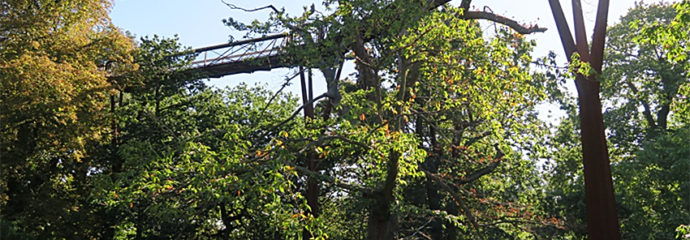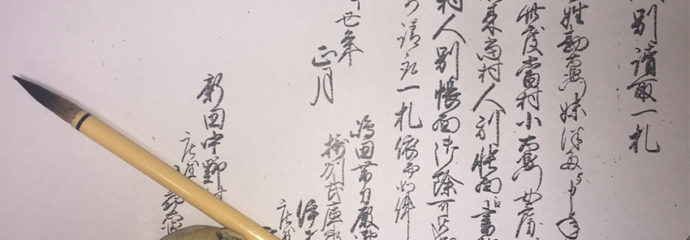Osaka University of Tourism’s
Web magazine”passport”
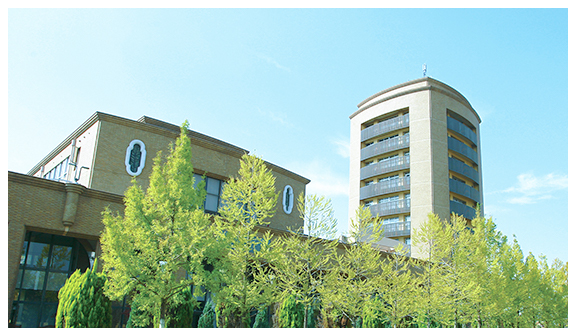
「passport(パスポート)」は、観光や外国語、国際ニュースなどをテーマに、
大阪観光大学がお届けするWEBマガジンです。
記事を書いているのは大阪観光大学の現役の教授や学生たち。
大学の情報はもちろん、観光業界や外国語に興味のある方にも楽しんでいただける記事を定期的に公開していきます。
YOGA & ZEN:東洋の知恵の実践
(Note: An English translation follows the Japanese text.)
上向きの三角形と下向きの三角形を組み合わせた図形(写真1)をご覧下さい。じっと見ていると、どのように感じるでしょうか。“?”のような印の付いた中央部分が遠くにあるように見えますか、あるいは、近くにあるように見えますか。また、これは何のために用いる絵でしょうか。
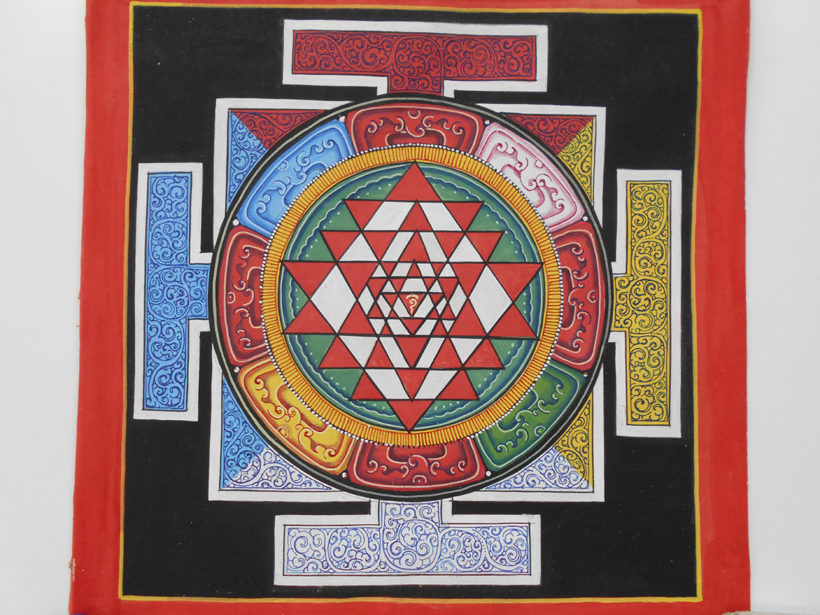
この絵はヒンズー教のヤントラと呼ばれるもので、精神集中の技法であるヨーガ(Yoga)で用いられる道具です。ヨーガと言えば、現代の日本では、ダイエット法や健康法の一種として知られていますが、ヨーガ発祥の地インドでは、単なる健康法ではなく、宗教的な実践方法です。紀元前2300?2000年頃に最盛期を迎えた古代インダス文明の印章にも、ヨーガのポースをとった人物が表されており(写真2)、この時代に、既にヨーガが実践されていたのではないかという説もあります。いずれにせよ、遅くとも紀元前800?700年頃には、ヨーガによって日常生活とは異なる特殊な精神状態になることがインドでは知られていました。そして、紀元2?4世紀頃には、古典的ヨーガの行法が『ヨーガ?スートラ』という根本聖典において体系化されました。
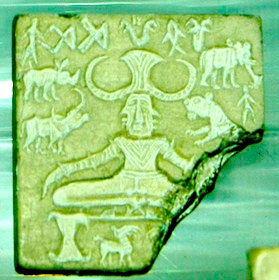
日本では、「ヨガ」という名称が一般に流布していますが、インドの言葉では「ヨーガ」と言います。元来、ヨーガは、馬に軛(くびき;馬と馬車とを繋ぐ道具)を付けることを意味します。この場合、目や耳などの感覚器官が、馬に譬えられています。感覚器官は放っておくと、あちらこちらの対象に結びついてしまうので、精神を集中するためには、それを制御する必要があります。ヨーガでは、車に乗った御者が軛の付いた馬を思い通りに操るのと同じように、感覚器官を制御します。つまり、ヨーガは心の働きを制御し、鎮めることによって、卓越した知恵を体得する実践方法なのです。
ヨーガの実践では安定した姿勢をとり、呼吸を整えて意識を一点に集中させます。そして、徐々に息は細く長くしてゆきます。ヨーガの達人になると背中でパンが焼けるほど熱を放つそうです。また、仏教は、日本で実践されている禅(Zen)のようなヨーガ的行法の源泉です。私は禅僧の指導で、座禅の体験をしたことがありますが、なかなか意識を集中することができませんでした。コツを聞きますと、息の数を「一と、二と、三と」と数えるように言われました。息を吐く時間は吸う時間の三倍くらいです。また、心が乱れている時は呼吸も乱れているので、まずは呼吸を整えなければならないとも教えられました。
ところで、この禅体験がかなり役に立つことがありました。かつて訪問先のビルでエレベーターに乗っていた時、突然停電となり、中に閉じ込められてしまいました。幸いすぐに外部と連絡をとることができましたが、電力が復旧するまでの間、暗闇の中で何をすればよいかと思案しました。そこで座禅をすればよいと思いつき、靴を脱いで静かに坐っていました。
ヨーガや禅のような瞑想(めいそう)には、心を鎮め、ストレスを緩和させる働きがあります。従って、それは古代から宗教における精神修養と結びついて来ました。仏教の開祖である釈迦も、インドのブッダガヤで瞑想して悟りを開きました。現在、この地には世界中から多くの人々が訪れ、釈迦がその下で悟りを開いたとされる菩提樹(ぼだいじゅ)に参拝しています(ブッダガヤは世界遺産に登録されています)。彼らの中には、その樹の近くで経典を唱え、静かに瞑想する人々もいます。例えば、最近、菩提樹の下で精神修養のワークショップに参加している外国人旅行者のグループに偶然出会いました(写真3)。
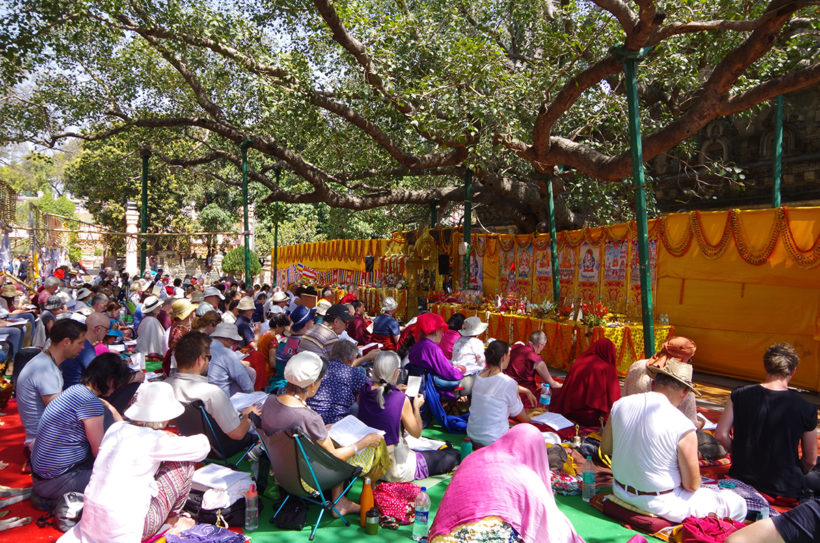
ヨーガや禅は、あくまで個人が自律的に行なうものであり、他者に依存するものではありません。仮に、ある人の代わりに人工知能を搭載したロボットが瞑想したとしても、その人のストレスは決して解消されません。従って、人工知能が今より高度に発達するとされる21世紀の未来においても、ヨーガや禅は、人々のストレスを緩和させ心を平穏に保つ有効な方法として存続するものと思われます。みなさんも一度、瞑想を試してみてはどうですか?
観光学部?教授?博士(文学)
佐久間 留理子(宗教学?哲学)
?写真:すべて筆者撮影
?参考文献:
立川武蔵『ヨーガの哲学』講談社学術文庫<br />
佐久間留理子「観想法という行法」『癒しと救い:アジアの宗教的伝統に学ぶ』(立川武蔵?編著)所収、玉川大学出版部
YOGA & ZEN: Practice of the Wisdom in the East
Please look at the diagram (Plate 1) where an upward triangle is combined with a downward triangle. What do you feel when you look at it intently? Do you perceive the center with the “?” symbol as distant or proximate? Furthermore, what is this picture used for?
This is the diagram of a “yantra” in Hinduism, a tool used to concentrate the mind in yoga practice. While yoga is considered a method to lose weight and stay healthy in Japan, it is also a religious practice in India. A seal depicting a yoga posture from the ancient Indus Valley Civilization, which flourished from 2300 BC to 2000 BC (Plate 2), seems to indicate that the history of yoga dates back to this period. The practice of attaining a mental state distinct from that in daily life is known to have been recognized between 800 BC and 700 BC. Later, methods of classical yoga practice were systematized in the yoga sutras.
Although the name “yo-ga” (vowel “o” being short) is popular in Japan, “yoga” (vowel “o” being long) is used in India. The word yoga originates from “yuj,” meaning “to yoke.” This sense of the word was used to refer to yoking of horses. In the context of yoga, sensory organs are compared with horses. Uncontrolled sensory organs connect to the surrounding objects, and we have to control them to concentrate the mind. In yoga practice, one controls one’s mind in the same way an equestrian controls his/her horse with a yoke. Yoga is a practice that helps attain supreme wisdom by controlling and calming mental movements.
Yoga practitioners are required to maintain a stable posture, control their breathing, and concentrate their minds on a point. They need to take long breaths, inhaling slowly and deeply. A Yoga master can emit heat as much as he can bake bread on his back. Buddhism is the source of yoga techniques such as Zen meditation practiced in Japan. I practiced Zen meditation under the guidance of a Zen priest but found it difficult to concentrate my mind on a point. The priest suggested that I observe the frequency of my breathing and noted that exhaling should take about three times as long as inhaling. The Zen priest explained that if one is distressed, his/her breathing becomes disordered and needs to be controlled first.
Zen meditation has helped me considerably. I recall an instance wherein the elevator I was in had a power outage, and I was locked inside. Although I was able to contact someone soon, I wondered what to do in the dark until the power was restored. It occurred to me that I could practice Zen meditation, and I took off my shoes and sat calmly.
Yoga and Zen meditation calm the mind and reduce stress. Therefore, both practices are considered spiritual disciplines in religions since ancient times. For example, the founder of Buddhism, Shakyamuni, obtained enlightenment while in meditation in Bodh Gaya, India. Today, people visit this place and worship the Bodhi tree under which the Buddha is said to have attained enlightenment (Bodh Gaya is registered as a world heritage site). Some visitors recite scriptures near the tree and practice meditation calmly. I recently encountered a group of foreign tourists who participated in a workshop on spiritual discipline under the Bodhi tree (Plate 3).
Individuals practice yoga and Zen meditation independently, and one does not depend upon the other. Even if a robot equipped with AI (Artificial Intelligence) practices Yoga instead of someone, his stress will be never reduced. Thus, yoga and Zen meditation will still be considered valuable methods to reduce stress and calm the mind in the future when AI will be more developed. I recommend that every individual try meditation once.
Ruriko Sakuma Ph.D. (Religious Studies, Philosophy)
Professor
Faculty of Tourism




